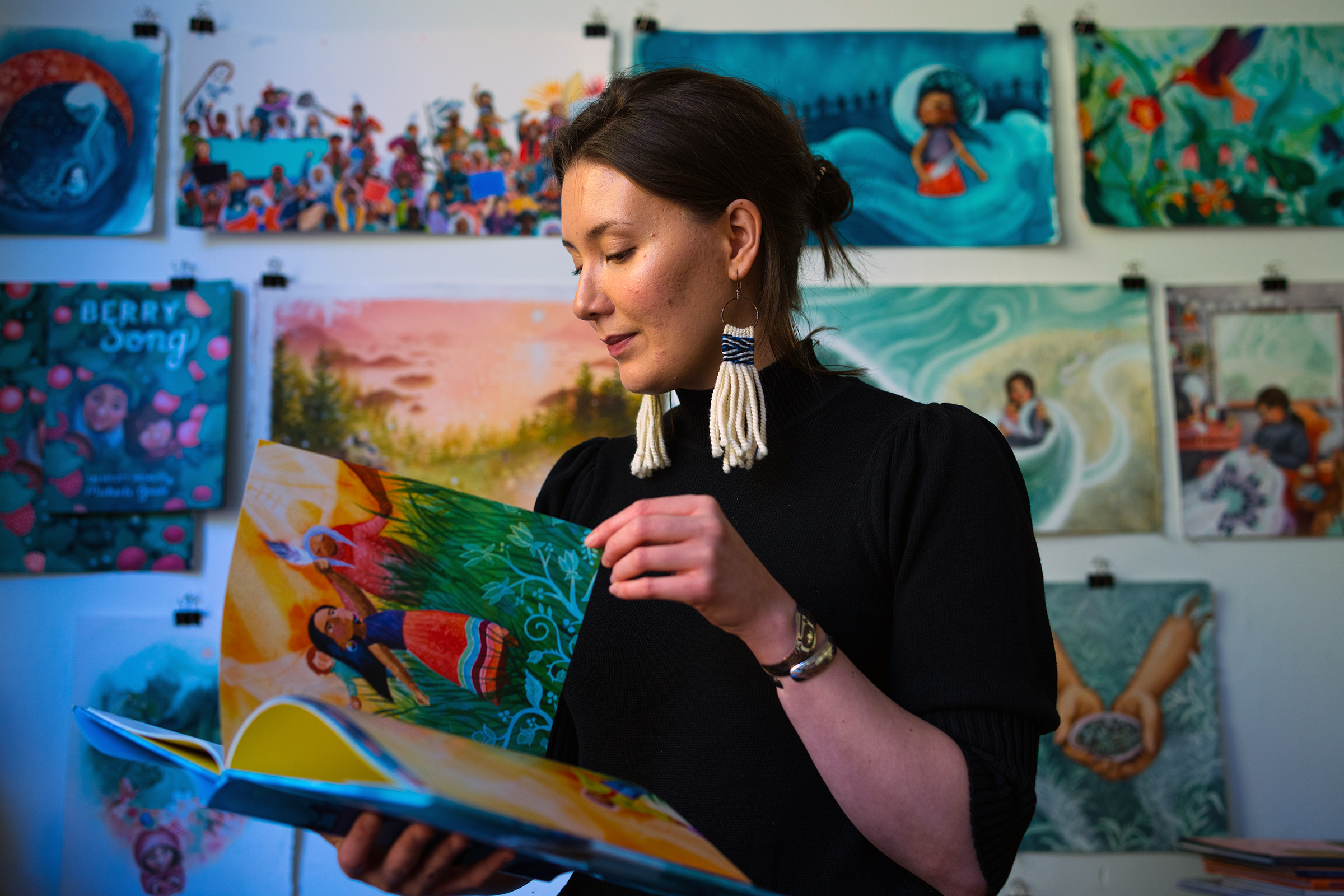Last April, Michaela Goade moved from Juneau to Sitka, Alaska. Though she’d never lived there before, moving to the land where her tribe is from felt like a homecoming for Goade, an award-winning illustrator who has always found inspiration in the natural world. The history of the Tlingit tribe she is enrolled with is everywhere in Sitka—the building that houses her studio was once a residential school her grandmother attended. The awe of nature that drew her there is clear in her illustrations for the 2020 New York Times best-selling children’s book We Are Water Protectors, by Carole Lindstrom, about an Ojibwe girl fighting against an oil pipeline, inspired by the Standing Rock Sioux.
Earlier this year, Goade’s work on Water Protectors made her the first Indigenous person and first woman of color to win the Caldecott Medal—the most prestigious award for illustration in children’s literature; past honorees include Maurice Sendak and Chris Van Allsburg. Speaking of her richly colored images of animals, people and landscapes, she says, “They have a magical style, but I don’t portray anything that’s not real.”
Goade, 31, spent her childhood in Southeast Alaska writing stories and doodling in sketchbooks. She studied graphic design and pursued it after college. But missing creative autonomy and home, she quit, just as the Sealaska Heritage Institute put out a call for illustrators. She answered, going on to illustrate four books, and catching the attention of an editor at Little, Brown, who would later publish We Are Water Protectors.

Goade entered a publishing industry in the midst of major change, as readers and industry workers called out its lack of diversity. Last year, a viral hashtag campaign called #PublishingPaidMe exposed stark racial pay disparities for authors. Navigating this world can be tricky, but Goade found a sense of grounding in a “Native KidLit community” of illustrators and authors from different nations to feel grounded. She mentors younger illustrators and is hopeful that the vast experiences within Indigenous communities will be better reflected across children’s literature, where only around 1% of main characters are Native. “I’m excited for the time when there’s a whole range of Indigenous illustrators,” she says.
She is working on a new picture book, Berry Song, set for publication next summer, about learning to be in touch with the land. Meanwhile, she hopes Water Protectors will help open doors for other Indigenous creators. “More publishers won’t just have that one Native book a year on their list,” says Goade. “People want these stories.”
- The 100 Most Influential People of 2024
- The Revolution of Yulia Navalnaya
- 6 Compliments That Land Every Time
- What's the Deal With the Bitcoin Halving?
- If You're Dating Right Now, You're Brave: Column
- The AI That Could Heal a Divided Internet
- Fallout Is a Brilliant Model for the Future of Video Game Adaptations
- Want Weekly Recs on What to Watch, Read, and More? Sign Up for Worth Your Time